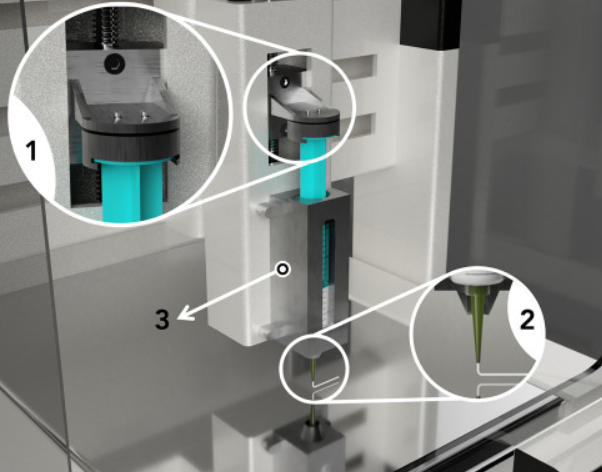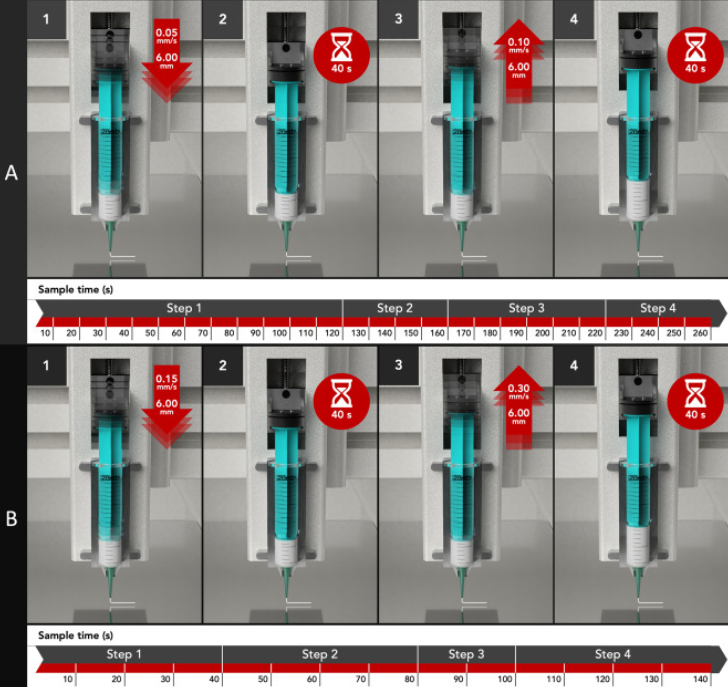UK-based biotech company FabRx has announced the official launch of its new pressure-detecting semi-solid extruder (SSE) printhead; the SSE Laguna.
To guarantee print uniformity while printing semi-solid doses, this new patent-protected quality control system employs a specifically designed pressure-feedback system in accordance with FabRx’s M3DIMAKER STUDIO software.

What were the results obtained from the research?
SSE is a 3D printing method that employs a syringe-based printhead to extrude a gel or paste-like material to produce the desired object. According to FabRx, SSE has already been employed in pharmaceuticals to create formulations for human clinical trials. To further assist its clinical implementation, the usage of a pressure sensor for quality assurance purposes could provide data on the printability of the feedstock material in situ and within precise printing conditions.
The goal of this study was to incorporate a pressure sensor into an SSE pharmaceutical 3D printer for material characterization along with process analytical technology (PAT) to oversee the 3D printing process. In this analysis, three distinct materials (soft vaseline, paste-like mass, and gel-like mass) were assessed under 12 distinct conditions by varying temperature, flow rate, or nozzle diameter. For the first time, a pressure sensor was used to characterize the rheological characteristics of the inks, that displayed temperature-dependent, plastic, and viscoelastic behaviors. Managing critical material properties and 3D printing process variables may enable a quality-by-design (QbD) method to facilitate a high-fidelity 3D printing process, which is essential for the future of personalized medicine.
In the present study, a pressure sensor was attached to the 3D printer’s extrusion barrel for real-time recording of the flow behavior of semi-solid masses via small-gauge nozzles employed in printlet production. The usage of a syringe throughout printing, along with the 3D printing platform itself, eradicates many parameters that would have to be monitored if the tests were conducted in a conventional manner, namely, using a texturometer, rheometer, or other equipment to examine the ink candidates prior to printing. In a nutshell, the developed setup enabled brief experiments to be carried out with the printing platform itself. This not only simulates the accurate printing conditions but also allows 3D printing to begin immediately with the labeled optimal parameter values.
The pressure-instrumented SSE motor-driven printhead (Laguna SSE printhead) and its control software system enabled mass characterization under printing conditions. By using the same heating chamber, syringe, and nozzle, it was possible to simulate the plunger’s motions over the mass throughout the printing process, allowing the mechanical characteristics of the mass to be determined in situ. Numerous other covariates, such as thermal diffusion or flows through the nozzle and syringe barrel walls, are eliminated.

Semi-solid extrusion technologies in the additive manufacturing sector
Previously, a group of researchers from Nagoya City University in Japan created a novel type of 3D bioprinted drug delivery system using fish gelatin. The researchers printed three distinct patch shapes using a semi-solid extrusion bioprinter: a cylinder, a torus (donut), and gridlines. The hydrogel utilized contained a semi-synthetic polymer, with fish gelatin as the primary ingredient. The animal was chosen because fish gelatin is relatively inexpensive and does not conflict with any personal or religious beliefs. The patches were then filled with the DOX compound, and the team set to work evaluating their release rates.
Furthermore, a group of Greek and Italian researchers investigated the application of 3D printing as a coating technology for customizing the release rate of drugs for patient-specific delivery. The researchers tuned the release of two Active Pharmaceutical Ingredients (APIs) inside the tablet by partially coating it with semi-solid extrusion 3D printing technology. Utilizing experimental design methods, the team was able to customize the chosen APIs release profile by adjusting different parameters of the 3D printing coating process.
What does the future of 3D printing for the next ten years hold?
What engineering challenges will need to be tackled in the additive manufacturing sector in the coming decade?
To stay up to date with the latest 3D printing news, don’t forget to subscribe to the 3D Printing Industry newsletter or follow us on Twitter, or like our page on Facebook.
While you’re here, why not subscribe to our Youtube channel? Featuring discussion, debriefs, video shorts, and webinar replays.
Are you looking for a job in the additive manufacturing industry? Visit 3D Printing Jobs for a selection of roles in the industry.
Feature image shows a schematic view of the M3DIMAKER printing platform equipped with Laguna SSE printhead. Image via FabRx.



